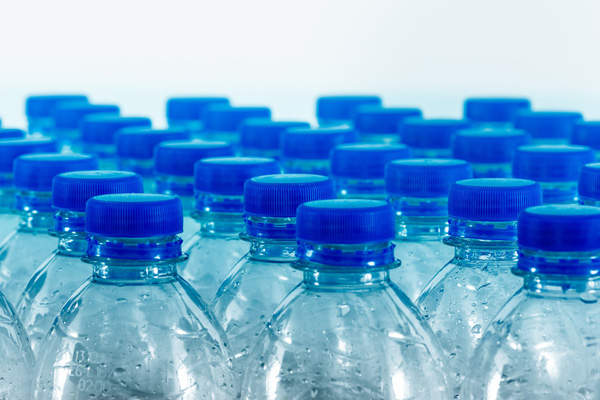

You would surely have to be living on another planet not to be aware that the plastics industry is growing at a staggering and perhaps a rather alarming rate. But more worrying than this is the sheer volume of plastic waste. It is already estimated that more than 10 million tons is dumped into our oceans every year and that, by 2050, there will be more plastic than fish. A recent report by the OECD predicts that global plastic waste could triple by 2060. Whether we are a manufacturer or a consumer, we all know that we have our own very important part to play. As a mechanical design engineer specialising in plastic part development for injection moulded components we are conscious that, we too, have more than a supporting role in this matter. So what is the answer?
Prevention?
Given that the global consumption of plastic continues to rise, could we really sensibly prevent everyone living worldwide from using it, as early as from tomorrow, next week, next year or next decade? Take the recent Covid-19 pandemic for example. Although the various lockdowns and the subsequent decline of economic activity were acknowledged to have led to a general reduction in the use of plastics, without it, we, living in the UK, would have had no supply of the rapid lateral flow testing kits available for us to test ourselves at home, and more importantly no PPE for our NHS, social care and other key frontline workers to wear. A scary scenario of the whole episode ending differently, suddenly comes to mind. So our present reliance on plastic is fairly clear, but is there a ‘greener’ alternative?
Recycling?
Well, the current disposal routes for our plastics differ and are continually being revised. It is generally acknowledged that the lifecycle of many plastics cannot be considered to be ‘circular’ because a very small amount actually gets recycled, with the majority going to landfill and the rest being incinerated (or even illegally dumped). The environmental impact of biodegradable plastics has also come under the spotlight. It has been claimed that following a recent test, fragments of all bags, including biodegradable plastics, were found to be present in the environment after 27 months.
However a positive shift in recycling technologies has increased, probably as a combination of consumer pressure, as well as our knowledge of environmental damage widens and new government regulation and policies are passed. Likewise, the same can be said to be happening with secondary plastics, with a rising number of new patents focusing on innovation in this area too.
Innovation?
So does the answer lay squarely with sourcing an alternative material/s to plastics? Recently innovation in environmentally relevant plastics technologies has rapidly increased. Many biochemists across the globe, are developing bio-based plastics, which can be used with current injection moulding equipment and machinery for example, thus negating the need for further investment by manufacturers.
But what of other innovations? Take Lucy Hughes, for example. Her recent article on the ‘This is Engineering’ web site explains how she created “a plastic-like material” that has been made from natural marine ingredients. This innovative design is said to be both compostable and biodegradable, and won’t negatively impact on marine life. Another innovation, is the transformation of waste plastic into hydrogen. Non-recyclable plastics, otherwise destined for landfill or other methods, can now be turned into creating a sustainable source of fuel. We recognise that there are many other innovations being scoped out and worked on, these are just a couple of examples to illustrate that solutions are being sought for the plastics industry.
Working as we often do, with medical device innovators, designers and manufacturers, we acknowledge and appreciate the challenges facing everyone in this industry. Especially the concept of managing a delicate balance between providing patients with the appropriate equipment to combat or monitor a medical issue, with that of the volume of plastic waste from doing so. There are companies, however, that where regulation and policy makes it possible, are seeking more environmentally-friendly solutions to this problem.
So, is plastic fantastic? Well, we will leave you to draw your own conclusions. Despite the gloomy statistics relating to plastic waste, there certainly seems to be a lot of innovation, investment and new ideas being sought and delivered, in relation to alternative materials and processes to better make the concept of the plastic lifecycle, generally kinder to the planet.
Sources:
https://www.thisisengineering.org.uk/meet-the-engineers/lucyh/
https://www.theengineer.co.uk/content/news/plastic-into-hydrogen-plant-given-green-light-in-scotland
https://www.theengineer.co.uk/content/news/digital-twin-project-to-help-hydrogen-into-grid
https://content.yudu.com/web/1rl19/0A1uufg/IWJun22/html/index.html
https://www.oecd.org/environment/plastics/
https://plasticoceans.org/the-facts/
https://pharmaceuticalmanufacturer.media/pharma-manufacturing-news/drug-delivery-news/jabil-launches-new-qfinity-autoinjector-platform/
https://www.twinfm.com/article/medtech-company-looks-to-solve-nhs-clinical-waste-and-plastic-problem
https://www.imeche.org/news/news-article/siemens-mobility-secures-first-order-for-fleet-of-hydrogen-trains
https://www.sustainableplastics.com/this-week-issue/archives
https://medical-technology.nridigital.com/medical_technology_jul22/lfts_plastic_waste_sustainability
https://eureka.mydigitalpublication.co.uk/?m=65871&i=752954&p=20&ver=html5

